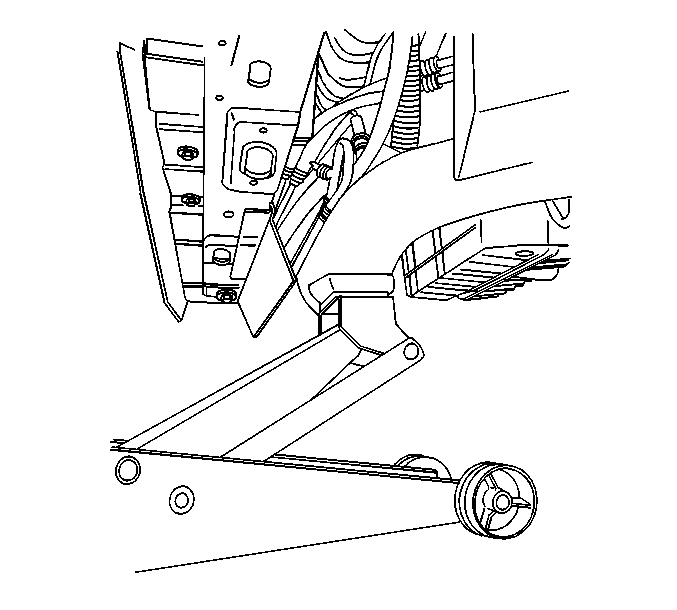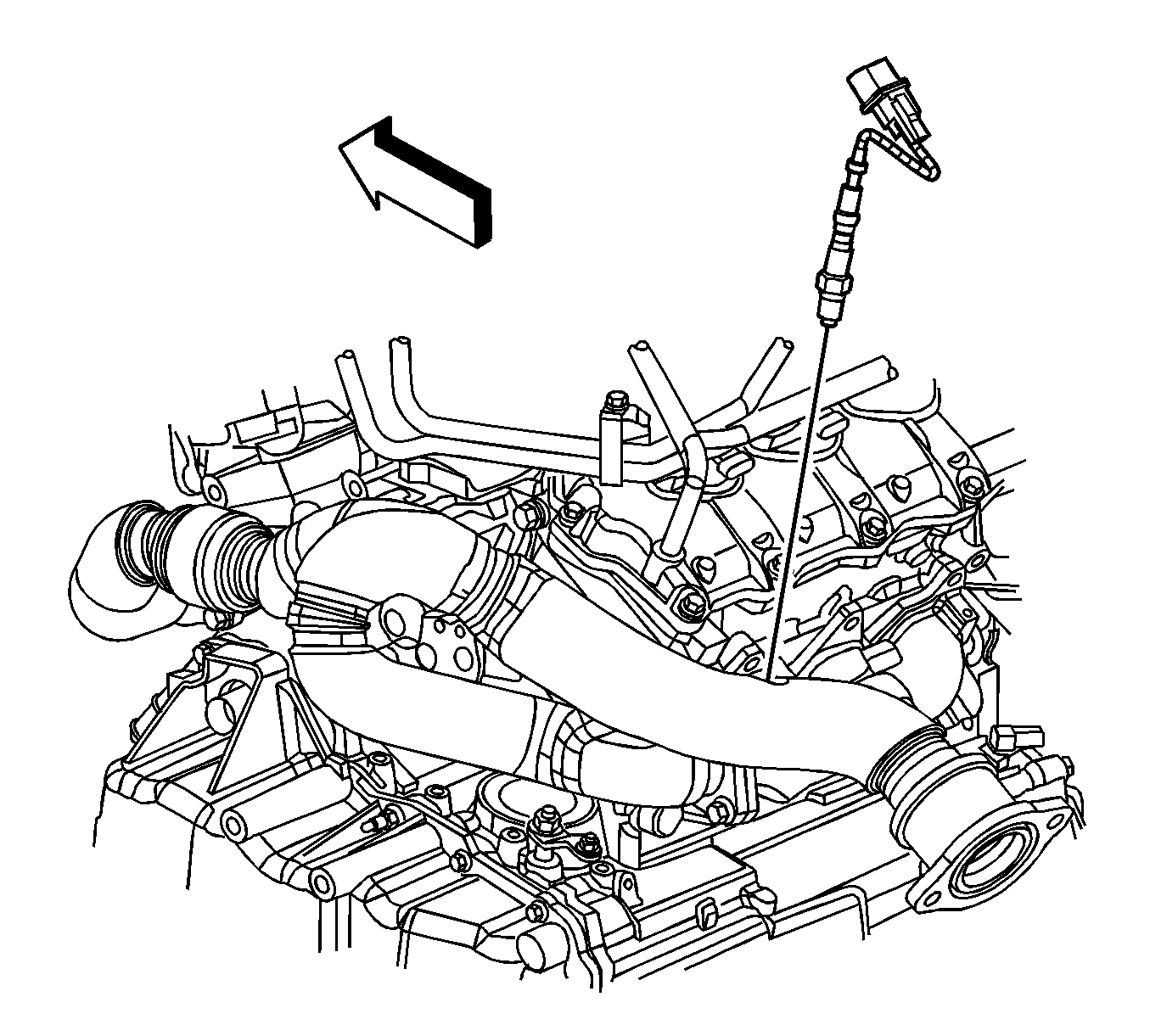Removal Procedure
Notice: The Heated Oxygen Sensor (HO2S) and the Oxygen Sensor use a permanently attached pigtail and connector. Do not remove this pigtail from the Heated Oxygen Sensor. Damage or the removal of the pigtail or the connector could affect the proper operation of the sensor.
Take care when handling the HO2S and the O2S. Keep the in-line electrical connector and the louvered end free of grease, dirt, or other contaminants. Also avoid using cleaning solvents of any type. Do not drop the HO2S or the O2S. Do not roughly handle the HO2S or the O2S.- Raise and support the vehicle. Refer to Lifting and Jacking the Vehicle in General Information.
- Disconnect the intermediate steering shaft from the steering gear. Refer to Intermediate Steering Shaft Replacement in Steering Wheel and Column.
- Remove and reposition the front portion of the front fender liners in order to gain access to the frame front bolts. Refer to Front Fender Liner Replacement in Body Front End.
- Lower the vehicle.
- Position a floor jack at the front center section of the frame in order to support the powertrain.
- Remove the frame front bolts.
- Carefully lower the powertrain or raise the vehicle in order to gain access to the oxygen sensor.
- Disconnect the oxygen sensor electrical connector.
- Remove the heated oxygen sensor (HO2S).


Notice: The use of excessive force may damage the threads in the exhaust manifold/pipe.
Important: If the engine temperature is not above 48°C (120°F), the oxygen sensor may be difficult to remove.
Installation Procedure
- Install the HO2S.
- Connect the oxygen sensor electrical connector.
- Use the floor jack in order to raise the powertrain until the frame insulators contact the chassis.
- Install the frame front bolts. Refer to Front Frame Replacement in Frame and Underbody.
- Raise and support the vehicle. Refer to Lifting and Jacking the Vehicle in General Information.
- Install and reposition the front portion of the front fender liners in order to gain access to the frame front bolts. Refer to Front Fender Liner Replacement in Body Front End.
- Connect the intermediate steering shaft to the steering gear. Refer to Intermediate Steering Shaft Replacement in Steering Wheel and Column.
- Lower the vehicle.

Notice: Use the correct fastener in the correct location. Replacement fasteners must be the correct part number for that application. Fasteners requiring replacement or fasteners requiring the use of thread locking compound or sealant are identified in the service procedure. Do not use paints, lubricants, or corrosion inhibitors on fasteners or fastener joint surfaces unless specified. These coatings affect fastener torque and joint clamping force and may damage the fastener. Use the correct tightening sequence and specifications when installing fasteners in order to avoid damage to parts and systems.
Notice: A special anti-seize compound is used on the oxygen sensor threads. New service sensors should already have the compound applied to the threads. Coat the threads of a reused sensor with anti-seize compound P/N 5613695 or equivalent.
Tighten
Tighten the HO2S 1 to 42 N·m
(31 lb ft).

